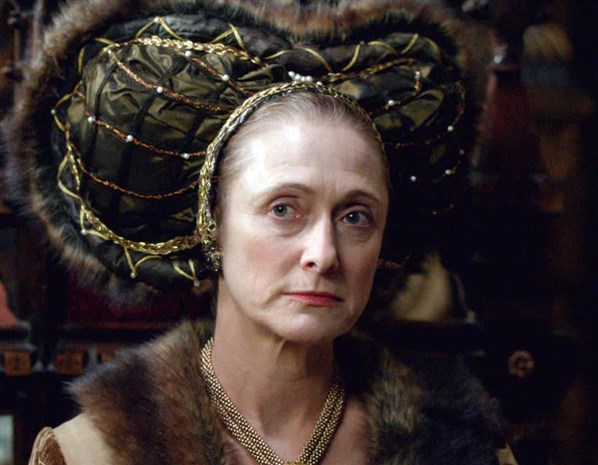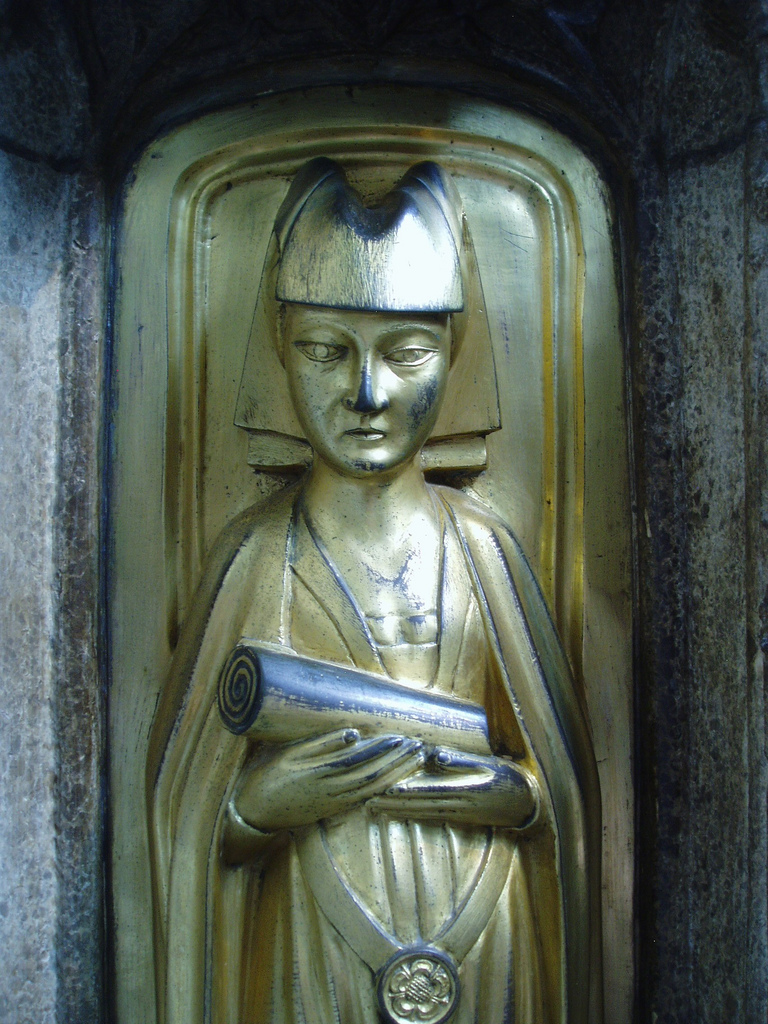

Second Neville sister Cecily was named for the least attractive female character in The White Queen BBC1 series, excepting Margaret Beauchamp. (I’m not sure quite what Lady Beauchamp did to upset Philippa Gregory – we at Lydiard are very fond of her as she brought the St John’s wealth, fame and a direct connection the the Crown.)
It can be safely said that in the BBC1 series no one seems to like poor Aunt Cecily, Duchess of York, not even her sons.
Aunt Cecily had married Richard, 3rd Duke of York, heir to the throne of his Plantagenet Uncle Edmund. Richard and Cicely never made it to the throne, but two of their sons did. Now you might have supposed that would have pleased Aunt Cis, but according to the Sunday evening saga nothing could be further from the truth.
She appears as a spectre at the wedding feast of eldest son Edward IV and Elizabeth Woodville, meanwhile encouraging second son, George, Duke of Clarence, to challenge his brother for the title.
She eventually gave up on all of them and lived out her last years in a nunnery, dying in her 80s.
The niece who was named Cicely for her sadly had a much shorter lifespan. The second daughter of Richard Neville, Earl of Salisbury and his wife Alice Montacute was born in about 1426. Her father wasted no time in securing a favourable alliance and Cecily was married at the tender age of 9 in a double ceremony with her even younger brother Richard.
The nuptial agreement to marry his daughter to the Warwick heir cost Salisbury an arm and a leg, but it all paid off in the end.
By 1442 the young couple were living together as husband and wife, dividing their time between Warwick and Hanley Castles. In 1443 a daughter was born but their happiness would be short lived.
The teenage Henry Beauchamp, who had inherited the combined Despenser/Beauchamp/Warwick estates, died in 1446. The couple’s only child Anne died in early childhood, which left the whole caboodle up for grabs by the family. Well not exactly as Cecily’s Kingmaking brother was perfectly placed, married to Henry’s only sister of the full blood, Anne Beauchamp, so he pocketed the lot.
Cecily’s second marriage was to career politician John Tiptoft, later Earl of Worcester and she moved south to his home at Great Eversden, Cambridgeshire. This marriage lasted but fifteen months as Cecily died in 1450, most probably during childbirth.
So what can we glean from Cicely’s short life? Surprisingly, quite a lot, as her legacy opens a window on the lives of all the sisters.
Among her belongings Cicely left a collection of fine books and manuscripts. The Neville women, including the waspish Aunt York, were described by CM Meale as ‘significant figures in the history of piety and book patronage in the 15th century’ in Women and Literature in Britain 1150-1500 published in 1993.
While most 15th century reading matter was written to inculcate religious obedience and good behaviour it wasn’t all prayers and psalters. The girls’ grandmother, Joan Beaufort owned the odd Arthurian romance and the women had access to the stories of legendary figures and romantic tales – a medieval Mills & Boon.
Cecily died on July 28, 1450 and was buried at Tewkesbury Abbey three days later. Only one known representation of Cecily remains. Along with first husband Henry, brother Richard and his wife Anne, Cecily appears as a weeper on the magnificent tomb of her father in law Richard Beauchamp, Earl of Warwick in St Mary’s Church, Warwick.

Cecily Neville, depicted on the tomb of her father in law Richard Beauchamp. Photo courtesy of Aidan McRae Thomson